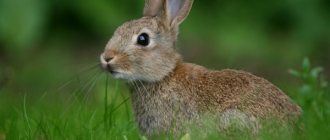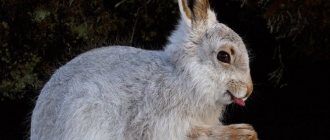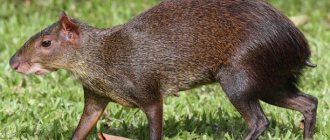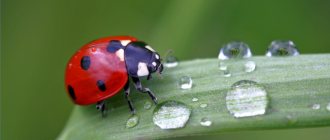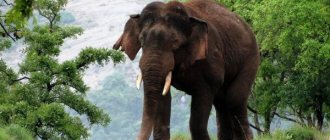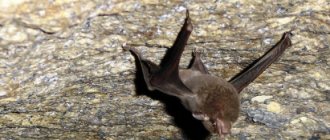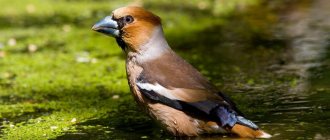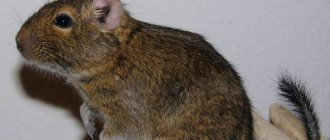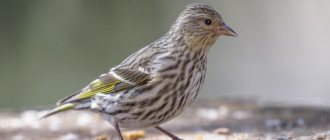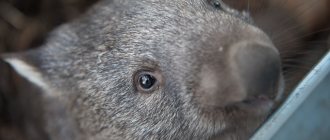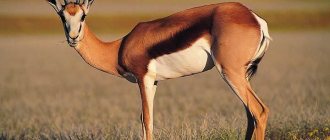Hares are perhaps the most common animals in our country. Despite the fact that they are a favorite trophy of many hunters, their numbers are practically unchanged, since due to their fertility, these animals reproduce very actively.
There are about 30 species in total; all types of hares differ somewhat in external features and habits.
Hares: description
Hares represent the family Lagoraceae, which in turn represents the order Lagomorpha. This order should include not only hares and rabbits, but also pikas. Hares are easily distinguished from other animals by the presence of relatively long ears, a very short tail and rather long hind legs, so hares mainly move by long jumps.
Appearance
Hares are small animals that do not have a powerful body. Only some of the adult individuals grow up to 67 cm in length and reach a weight of about 7 kilograms. The body of hares is small and, as it were, flattened on the sides, so it looks very thin and thin. Long ears with a unique elongated shape are considered a distinctive feature of these animals.
The length of the ears depends on the variety of hares, but they are never shorter than half the length of the head. Most varieties have ears pointed at the ends, while some species of hares, on the contrary, have ears rounded at the ends. The head of hares in relation to the rest of the body is small, and in shape it resembles an oval, which tends to narrow towards one end. The lip has a rounded shape and is divided into two parts by a characteristic groove.
It is important to know! The teeth of all lagomorphs are similar to the teeth of rodents, but there are some differences. They consist in the fact that the hare family has 2 pairs of incisors on the upper jaw, while the front pair is much better developed than the back one.
The teeth of hares, like those of rodents, grow throughout their lives, so they need to eat solid food components so that they can wear down naturally.
In large species of hares, the hind legs are almost a third longer than the front ones, but in small species they are almost the same. There are 5 toes on the front paws of these animals, but there can be 4 on the hind paws. The feet of these animals are quite long, and their soles are covered with hair. The claws are sharp and almost straight. This allows hares to protect themselves from predators and easily dig up snow in winter to get to various food items in the form of roots.
Almost all types of hares have a relatively small tail in the form of a pompom and at the same time practically invisible, no matter from which side you look at it. The body of these animals is covered with thick and soft fur. In this case, fur covers almost all parts of the body. Even the inner surface of the lips has a narrow strip of fur. Hares can have a very diverse coloring: there are gray hares, brownish, brownish, and also sandy. With the onset of winter, many species of hares change their coat color to white, which helps the animals to camouflage perfectly in winter conditions.
Behavior and lifestyle
These land animals lack many skills. They are not swimmers and cannot climb trees or rocks. They prefer to live, depending on the species, forming colonies, and can also lead a separate lifestyle. They remain active throughout the year, so they do not hibernate in winter.
They are mainly nocturnal, resting during the day in thick grass, thickets of vegetation or depressions in the ground. In winter, they can lie in a shallow hole under a layer of freshly fallen snow. They move using large jumps, reaching speeds of more than 60 km/h.
It is believed that hares do not have sharp eyesight, but their hearing and sense of smell are excellent. Hares are distinguished by great caution and use wait-and-see tactics, staying in shelter until the last moment. As a rule, the hare jumps out of cover suddenly, as a result of which the surprise factor is triggered, since the hunter or other predator simply does not have time to react in a timely manner. As a result, the hare runs away, remaining alive.
Interesting fact! The hare, running away from its pursuers, very skillfully confuses its tracks. He meanders, makes long jumps to the sides, and can also run in the opposite direction in his own tracks.
People consider hares to be cowardly precisely because these animals suddenly jump out literally from under the feet of a passing person and run away as best they can. In fact, this is not cowardice at all, but an opportunity to save one’s life or, in other words, to survive in such difficult natural conditions.
And yet, the hare is not quite a cowardly creature, as many people think, and is quite capable of standing up for itself. If the hare begins to understand that he will not escape the chase, then he lies down on his back and begins to beat his pursuer with his hind legs, which are quite developed and muscular. The blows are so strong and precise that the pursuer can receive fatal injuries. Any hunter knows that lifting a still living hare by the ears is very dangerous, since he can immediately receive several blows from the hind limbs, and quite strong ones at that.
How long does a hare live?
It is believed that in the natural environment a hare can live on average no more than 8 years. At the same time, many of the animals fail to achieve even such terms, since they die much earlier, if not from attacks by predators, then from shots from hunters. As a rule, many hares die, which are still defenseless against many, even small, predatory animals. If you keep hares in captivity, they can live more than 10 years.
Sexual dimorphism
It is quite difficult to distinguish a hare from a hare, especially since they do not differ in coat color. As a rule, the female is somewhat smaller in relation to the males. In addition, the shape of the head of a female hare is more rounded, while that of a male is more elongated and laterally compressed.
Journey to the animal kingdom. Fast legs, long ears: hares and rabbits
In hiding
Lezhka is the name of the winter (and summer) den where a hare lives in the forest from time to time. You can get to the hidden place by following the tracks of the hare. But, most likely, this will be very difficult to do. Before lying down, the hare intensively confuses its tracks, loops and jumps from side to side (takes notes). And only after completely confusing everyone, the animal finally lies down in an oblong hole. In it the hare hides from all kinds of enemies, and he has plenty of them: wolves, foxes, owls, eagles, dogs, lynxes. Also – hunters and poachers of all ranks and stripes.
Lying down can provide shelter from the piercing autumn and winter winds. In a strong winter blizzard, a hare can be covered in snow, as they say, “up to its ears.” A dome of snow and ice crust forms above it. Then the hidden hare, coming into the light, has to dig out of the cache. So the question about where hares live can be answered this way: some of the time they lie down. There they hide from enemies and the wind.
Types of hares
Experts point out that there are at least 3 dozen species of hares in the world, which differ in size, body structure and behavior, as well as lifestyle. For example, in nature there are:
- Antelope hare.
- American snowshoe hare.
- Alaskan hare.
- Black-tailed hare.
- White-sided hare.
- Kansky hare.
- Yellowish hare.
- The hare is black and brown.
- Bush hare.
- Sandstone hare.
- Tolai hare.
- Broom hare.
- Yunnan hare.
- Korean hare.
- Corsican hare.
- Brown hare.
- Iberian hare.
- Manchurian hare.
- Curly hare.
- Stark's hare.
- White-tailed hare.
- Ethiopian hare.
- Hainan hare.
- Dark-necked hare.
- Burmese hare.
- Chinese hare.
- Yarkand hare.
- Japanese hare.
- Abyssinian hare.
Interesting moment! This list can also include the Don hare, which lived in the vastness of Eastern Europe, as well as Northern Asia during the Pleistocene period, but today is considered an extinct species. It was a fairly large representative of this genus, with a highly developed chewing system. According to scientists, the closest relative of the Don hare is the modern white hare.
Hare
Within our country, it is found in the European part, near Lake Onega and Lake Ladoga, in the Perm and Kirov region, in southern Siberia and in a number of other regions. This species prefers forest-steppes and steppes, sometimes it can even be found in fields.
How do hares winter and what do they eat? The diet mainly includes seeds of herbaceous plants (quinoa, bristlecone, amaranth). Use dry grass. When the snow becomes deep, around midwinter, hares leave fields and meadows and move into bushes and forests, where stems and seeds can be found. They partially switch to tree food, eating the bark and branches of birch, elm, oak and ash, and fruit trees. And this leads to the fact that hares become the main pests of gardens. Hares cause the main damage in February-March.
Habitat
The hare can be found on any continent, with the exception of Antarctica. Even in the Arctic and Alaska, species such as the Arctic hare and Alaskan hare are found. In the vastness of our country, there are such species of hares as the white hare, the brown hare, the tolai hare and the Manchurian hare. Depending on the type of animal, hares inhabit various climatic zones, from the Arctic tundra to the humid tropics, including arid deserts and semi-deserts. Hares are found everywhere, both on flat terrain and in the mountains, at altitudes up to 5 thousand meters.
The mountain hare, for example, inhabits wooded areas, while some other species prefer open spaces, such as steppes or semi-deserts. Hares, compared to rabbits, do not dig holes for themselves, but they can inhabit empty holes abandoned by other animals. As a rule, the majority of species prefer to lead a sedentary lifestyle, but if there are problems with food in winter, they can migrate, but over very short distances.
Bed or hole?
The bed, especially if the hare is not particularly disturbed, can be used by it many times as a place for temporary shelter. But most often the hare is looking for new places. But in winter, in severe frost, it digs holes in the snow up to one and a half meters deep, in which it spends most of its time, coming out only in search of food or in case of danger.
Interestingly, the white hare only compacts the snow without throwing it out. Hares living in the tundra dig holes up to eight meters long in winter, using them as permanent shelters. Tundra whites do not leave the hole when danger arises, but hide inside and wait. And in the summer, marmots and arctic foxes use empty earthen passages as shelters. Where do hares live? In holes left by other animals. It's spacious and there's enough room for long-eared people.
What do hares eat?
The diet of animals is based on plant foods in the form of bark, young shoots, grass, berries, vegetables and fruits. Hares living in temperate latitudes prefer clover, dandelions, sedge, yarrow and alfalfa. In the summer, there is always enough food for them, since they can easily taste blueberry shoots and berries, mushrooms, as well as the fruits of wild apple and pear trees.
It is important to know! Hares quite often appear in agricultural fields, gardens and vegetable gardens. Especially in winter, they cause damage to cultural plantings by gnawing the bark. If cabbage, carrots and other garden animals remain on the field, then the hares will quickly “pick it all up”.
With the onset of cold weather, hares have to switch to pasture, so they begin to feed on tree bark, as well as annual shoots. In the harshest winter periods, hares pull out various roots and dried grass from under the snow.
Observation points
| Observation point name | Pine forest |
| Characteristics of the observation site | The pine forest can be called sterile, because there is practically no dust. All trees secrete a substance called phytoncide. The pine forest can be called sterile, because there is practically no dust. It settles on the resinous bark and branches. In the forest, the cycle of substances is most powerful, due to the deep penetration of tree roots into the soil. The crown of the pine tree is relatively loose and openwork, as a result of which it lets in a lot of light. Therefore, there is no strong shading in the pine forest. |
Russia, Nizhny Novgorod region, Sergach
Reproduction and offspring
Depending on the climatic conditions of their habitat, hares are able to reproduce up to 4 times a year. In colder regions, hares manage to raise only one litter of hares, but in warmer regions this happens much more often. At the end of winter, beginning of spring, hares begin their first mating season. The mating season is characterized by the fact that males arrange fights among themselves for the right to own a female. They can rise to their full height and box with their front paws. The one who wins begins to run around the female, seeking the female’s attention.
During this period, the hares' self-preservation instinct turns off, and they practically forget about the danger and may not notice the approach of predators. The female carries her future offspring for 26-55 days. After this period, several rabbits are born. Their number depends on living conditions and can be up to 11 cubs.
Interesting Facts! Hares that live in burrows, as well as in other natural shelters, give birth to hares that are hairless and blind, while hares that live on the surface of the earth give birth to hares that are covered with hair and are sighted.
The latter are born more massive and better prepared for life, since after birth they can easily hide in the grass. Cubs that are born at different times of the season are called differently.
Hares of the first litter are called nastoviks, and those born in the summer are called herbalists or letniks. Hares that were born in the fall are deciduous. Until recently, many believed that the hare is a bad mother because she does not care at all about her future offspring. It was believed that the hare feeds her cubs with milk only once, after which she leaves them to their fate.
Naturally, the bunnies do not die of hunger, since they are fed by other bunnies who happen to be nearby. Not all experts support this point of view and believe that the hare is somewhere nearby while the hares need to be fed with milk. If threatened, she is unlikely to be able to protect her offspring. The female feeds her offspring with milk until the young animals switch completely to feeding on vegetation. Depending on the species, the animals become sexually mature at the age of 2 and a half months or 2 years.
In the animal world. Mating games of hares.
Manchurian
This species is very similar in appearance to a rabbit and inhabits the territories of the Ussuri region and the Amur region. Prefers broad-leaved groves and forests with rich undergrowth. Hares have short legs and ears and are also small in size.
How do hares of this species winter? In the cold season, animals prefer to go to the slopes of the hills, where the snow cover is quite scarce. It is most active at night, and roosts during the day in secluded places - under dead trees and creases, in bushes, and less often in the hollows of old fallen trees. In winter, like the hare, it feeds on bark and young shoots, usually aspen and poplar.
Natural enemies
Regardless of their living conditions, hares have a lot of natural enemies. The main enemies are foxes and wolves, and hares living in colder climatic zones also have stoats, lynxes, etc., including birds of prey such as eagle, hawk, eagle owl. Hares living in warmer climates are attacked by hyenas, jackals, etc. For hares that inhabit the area around populated areas, dogs, including homeless ones, as well as pets, pose a danger.
Well, and, of course, the main enemy is man, in the form of hunters who hunt hares, since they have quite tasty meat and valuable fur.
Interesting Facts
There are some fascinating facts about hares:
- People traditionally call the animals “oblique”. In fact, hares have perfect vision. The basis for the appearance of such a definition is the animal’s habit of looping when running, which in the old days hunters associated with strabismus.
- Oddly enough, hares are not always vegetarians. These animals are not averse to eating the meat of birds and small animals that are in trouble.
- Contrary to popular belief, hares are not at all cowardly creatures. There have been cases where domesticated hares aggressively attacked dogs and cats, trying to bite them.
Population and species status
Most species of hares do well in the wild. However, there are species that cause concern among specialists. These types include:
- White-sided, black-brown and Yarkand have a status of "near vulnerable".
- The broom, Corsican and Hainan hare are considered "vulnerable species".
- The yellowish hare is classified as an "endangered species."
- The Ethiopian hare is classified as data insufficient.
The reason for the vulnerability of such species is associated with a number of anthropogenic factors, including the fact that these species are considered endemic and live within limited regions and are not found anywhere else. The Ethiopian hare leads a secretive lifestyle, especially in inaccessible mountains, so there is very little information about its population.
Where does the hare live?
Hares are land animals; they cannot swim or climb trees. Some species love space, spaces with little vegetation. Other species belong to the forest hares and inhabit areas with dense thickets. Hares can live separately; some species live in colonies and build burrows. The white hare lives in the tundra, rarely in forest and forest-steppe zones. The humpbacked hare rodent is a resident of the tropics and savannah. Lagomorphs inhabit the entire globe. Recently, they have been introduced to Australia, South America, Madagascar, and Southeast Asia.
Commercial value
Hares, despite their small size, are valuable animal species. These animals have valuable, dietary and tasty meat, as well as valuable fur, which is used for sewing warm winter clothes.
Despite the fact that hares have a sufficient number of natural enemies, they maintain their numbers thanks to their high fertility. In addition, they reproduce up to 4 times a year. These animals are distinguished by the fact that they are unpretentious either in terms of food or living conditions, therefore they quickly adapt to various living conditions. Thanks to this, hares are found in all conditions of all continents, with the exception of Antarctica.
What helps the hare?
Fleeing from enemies, of which the hare has plenty, the animal can run up to 70 kilometers a day, making wide circles and meandering through a forest or field. These tracks are sometimes difficult for even a skilled hunter to untangle. So what saves the hare is its main defense - the ability to run quickly. And the corresponding color of the skin also comes in handy for the hare in winter. The hare, fleeing from pursuit, can sometimes stop, as if listening and trying to see the enemy. But the hare only has well-developed hearing, and his vision and sense of smell are not very well developed. So, a white hare can come quite close to a standing person, which is what experienced hunters use.
